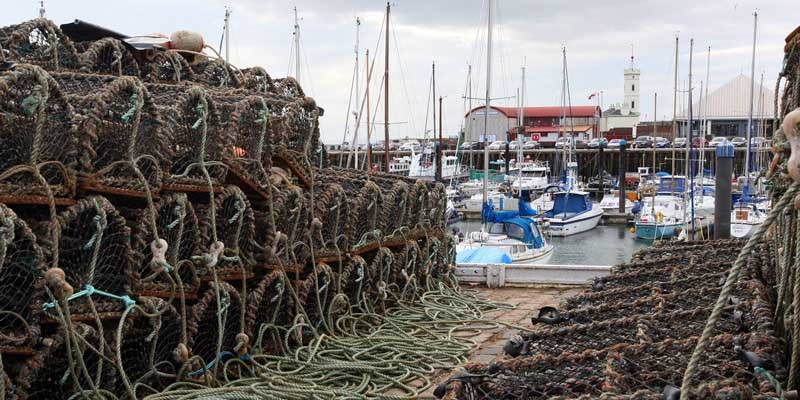Fears have been raised that three major offshore windfarms could affect the livelihood of Angus creel fisherman.
North East MSP Alex Johnstone voiced concerns that the construction phase of developments off the coast could have a detrimental impact on the lobster and crab population.
Research from the University of Maine’s Lobster Institute carried out in 2008 uncovered an array of potential problems that offshore turbines can cause for crustaceans, which could be relevant to the Scottish projects.
With North Sea projects from Seagreen Wind Energy, Repsol and Mainstream Renewable Power proposed for an area stretching from Arbroath to Torness, Mr Johnstone called for closer analysis of the environmental considerations raised in the report.
He said: ”Recent press interest in local offshore windfarms focused on the aesthetic effect on the Bell Rock Lighthouse, and although I share those concerns research done by the Lobster Institute at the University of Maine also highlights issues that I believe need to be addressed.
”Some of the key points raised by the Lobster Institute include concerns regarding cable laying, with a danger of suspended sediment attaching to eggs, damage to the filtering mechanism of larvae from an increase in suspended and settling sediment and the possible release of contaminants released by disturbing the sea bed.
”The report also highlights the issue of stress, reduced growth or reproduction rates brought on by blanketing of benthic animals by disturbed sediment, which in the worst cases can prove fatal.
”Although some scientists believe that offshore windfarms can provide beneficial environments for crustaceans, I believe that we need to look closely at all the available evidence regarding the construction phase of these sites so that the livelihoods of local lobster fishermen are protected.”
The Maine study investigated the effects that electromagnetic emissions from power cables would be likely to have on lobsters, concluding that more research was required to give a definitive answer. Work was also carried out to gauge whether cable installation would impact crustaceans migrating across the seabed.
The report expressed concerns that sediment may attach to eggs, contaminants such as oil or heavy metals may be released into the habitat and that there could be a negative impact on water quality from spills or hydraulics.
The Forth and Tay Offshore Wind Developers Group, which represents all three developers, confirmed studies were being carried out at each of the sites to assess how the sealife and seabed would be affected.
A spokesman said: ”The offshore windfarm developers in the Forth and Tay area are carrying out environmental impact assessments (EIA) for each of their sites and the associated export cable projects.
”Consultation with statutory bodies as well as the local fishermen and their representatives has been continuing since the early stages of these projects.
”The EIAs will consider all known impacts of the projects during the construction, operation and decommissioning stages, including any potential impacts on crustaceans.
”Environmental statements will be published by the developers to support the applications which will give the results of these assessments.”
Members of the Arbroath and District Inshore Static Gear Association, led by creel fisherman Brian Beckett, have held discussions with representatives from the three energy firms to assess the level of fishing in the area and how it could affect progress.
The group are worried the proposed area cuts through ”prime” fishing ground, with the closest of the hundreds of turbines planned just 25km off Arbroath.
Owners of creel boats fear the construction phase could cause severe disruption to their daily catch and may see other fishing vessels encroaching on to their patch.
The fishermen have been promised that juvenile lobster will be reseeded in the sea bed areas disrupted by the building work.
Seagreen’s development is the largest renewable energy project to be undertaken in Scotland, with 150 turbines, each around 200ft tall, proposed for the first of three phase areas.
